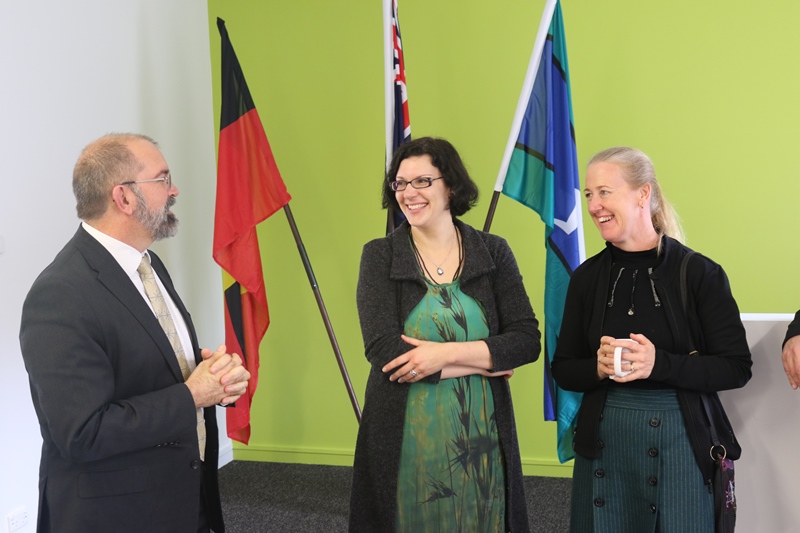Marcus Butler
23 September 2016: A new University of Canberra project aims to repair damage to waterholes in Central Australia which have been devastated by feral animals such as camels roaming the country.
The University’s Collaborative Indigenous Research Initiative (UC-CIRI) has provided $100,000 funding over two years for the project which will be carried out by the University’s Institute for Applied Ecology senior research fellow Fiona Dyer and science lecturer Valerie Caron.
The waterholes are not only sources of freshwater for local communities, but many are also culturally significant sites for the regions’ traditional owners.
The work will take place at Salt Springs, near the community of Santa Teresa, also known as Ltyentye Apurte by the traditional owners, the Arrernte people, which is located about 80 kilometres southeast of Alice Springs in the Northern Territory.
The Arrernte people will also be involved in the project which will focus on the nearby Salt Springs waterhole.
Dr Dyer said camels and other feral animals have caused massive damage to Salt Springs and other similar waterholes across Central Australia.
“While people might think camels can go for long periods without water, the actual truth is they travel widely searching for it and when things are dry they stop at nothing to access the waterholes,” Dr Dyer said.
“There were fences at Salt Springs and camels, cattle and horses just barge through; they muddy up any surface water, they foul the land and the water with their waste and even dead animals pollute the sites.”
The researchers will install animal watering points away from the waterhole to attract feral animals to less delicate areas (separate feral animal control programs will continue independent of the project). This will hopefully reduce the likelihood of the animals trampling over fences in future.
The waterholes are not just important sources of water for communities like Santa Teresa, but they have significant cultural importance as well, either historical or stretching back to the Dreamtime.
Dr Caron said the science of restoring arid waterholes is new anywhere in the world so this project is generating important data and experience.
“We will be monitoring the entire ecosystem around the watering hole, before the restoration begins and once it is complete,” she said.
“We’d expect to see changes in the plant and animal life, even on the near-microscopic scale as the waterhole is cleaned up and returned to normal use by Santa Teresa locals and native wildlife.”
The project will employ a research assistant from the Santa Teresa community and the results of the results will be translated into Central Australian languages such as Pitjantjatjara and Luritja/Pintubi.
Dr Dyer said they aim to equip other communities with the knowledge and ability to undertake restorative work on local waterholes themselves with scientifically tested and proven techniques.
“Returning these waterholes to their pre-camel condition is important for local wildlife, but I think that empowering communities to restore these sites themselves is something which builds on their connection to the living land and their own culture and I’m honoured to be able to help towards that goal.”
The project team also includes researchers from Alice Springs and Charles Darwin University, as well as traditional owners and rangers from the Central Land Council. Work is due to commence shortly.
The project is the fifth to receive funding from UC-CIRI, with more than $260,000 worth of grants announced earlier this year.
Dean of Aboriginal and Torres Strait Islander Leadership and Strategy, Professor Peter Radoll, said the UC-CIRI projects are important not just for the University but for Indigenous communities.
“Each of the projects funded so far involves local community members as meaningful contributors towards the research and the end results,” Professor Radoll said.
“UC has set out to ensure that when it comes to Aboriginal and Torres Strait Islander people we are undertaking research with them not about them; their goals and outcomes are central factors to this work.”



